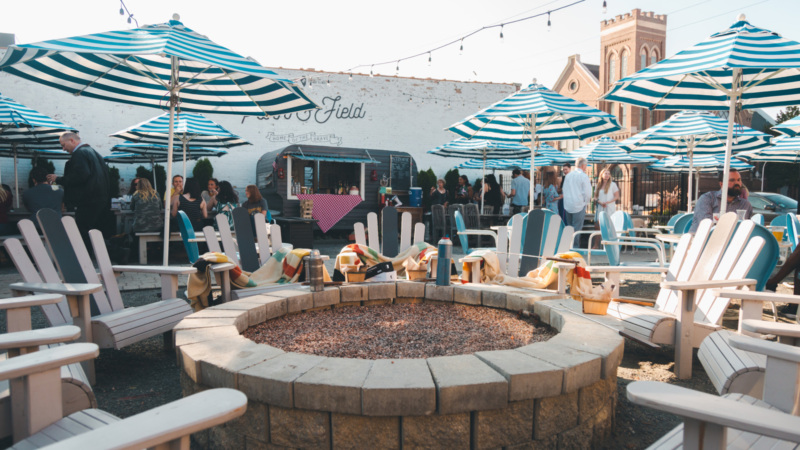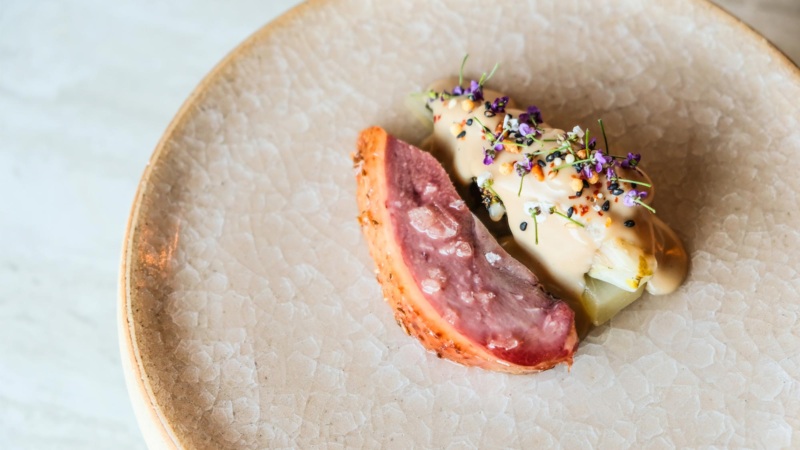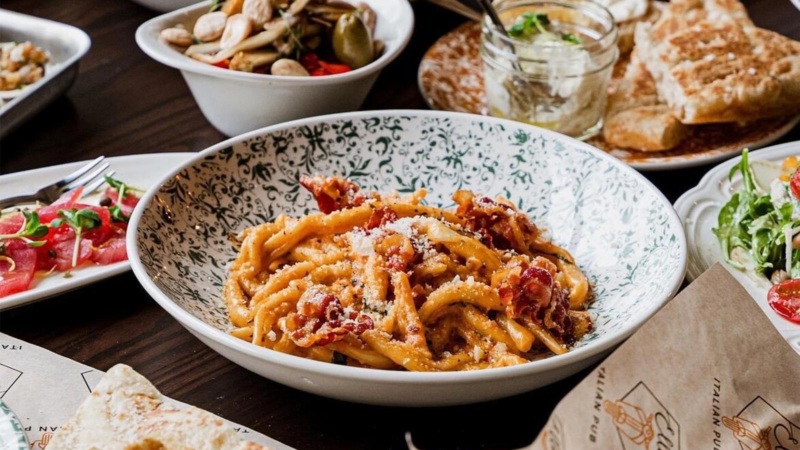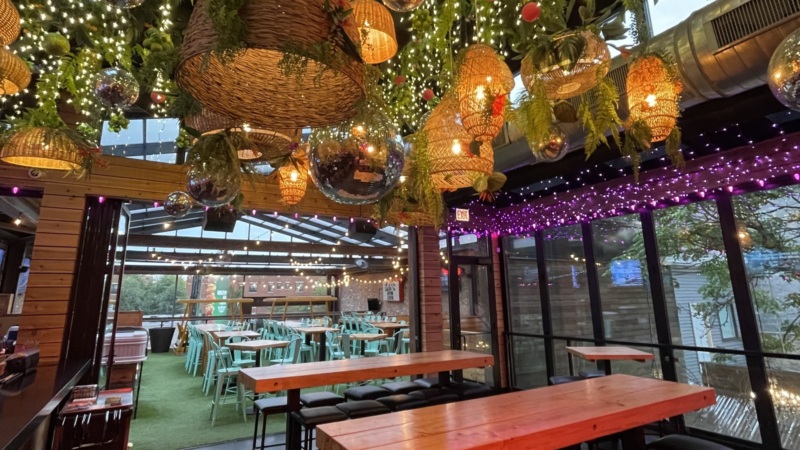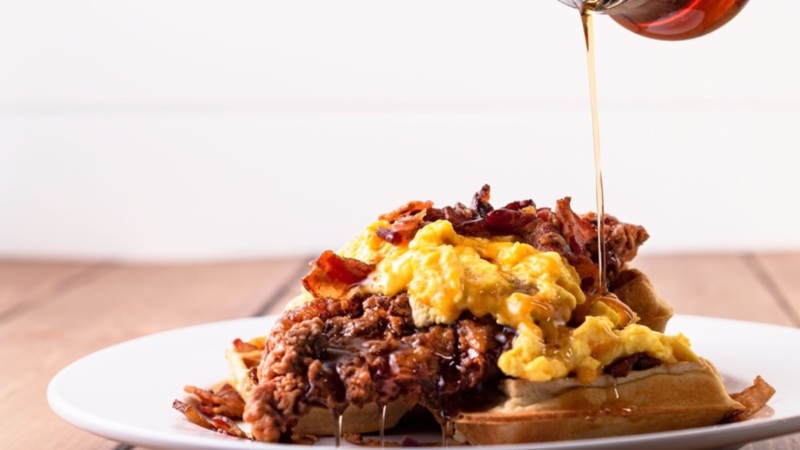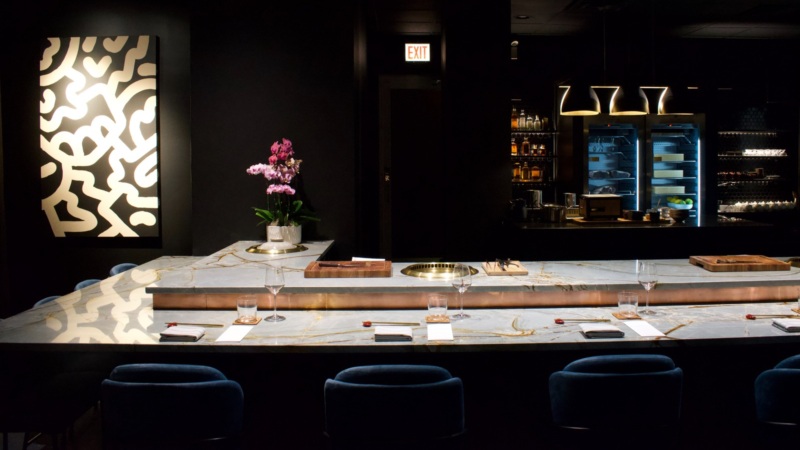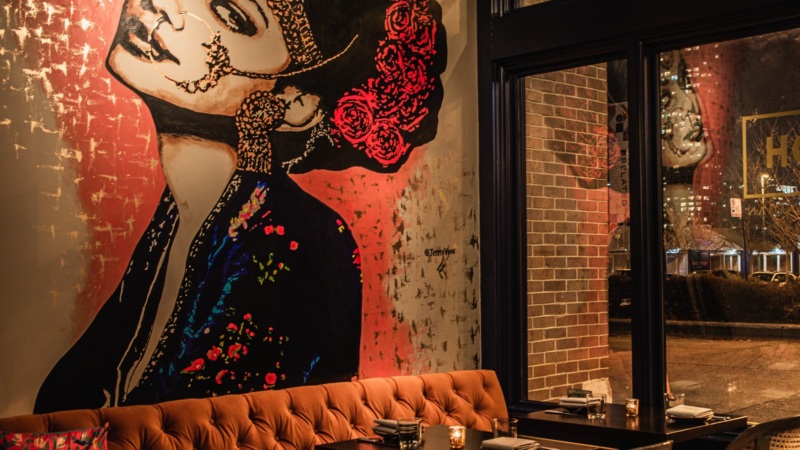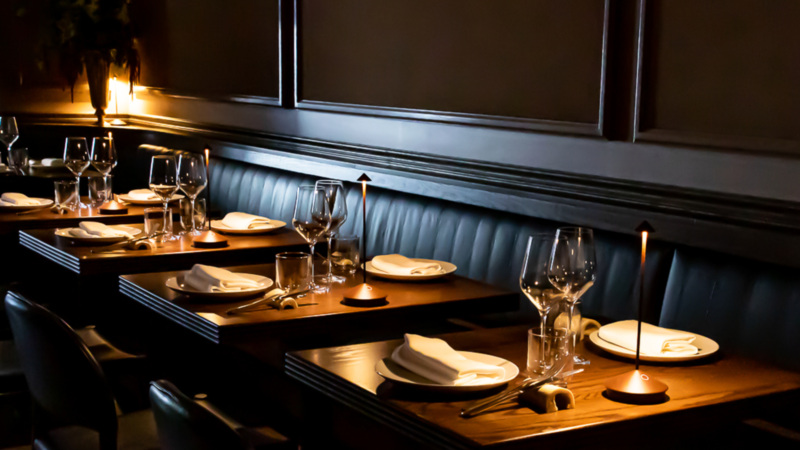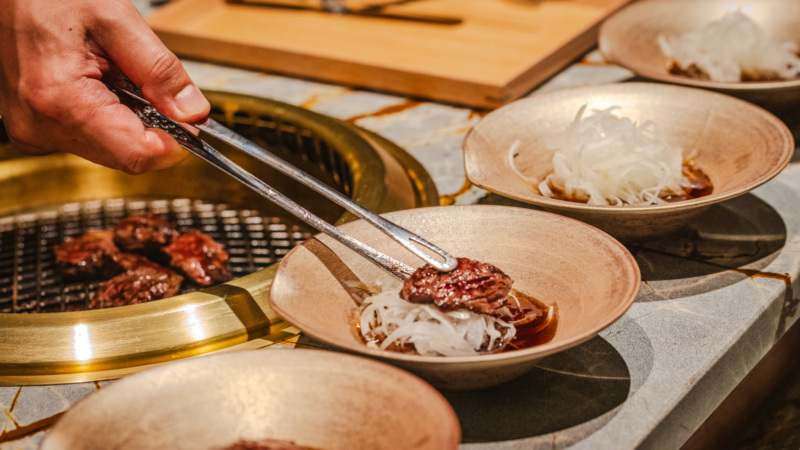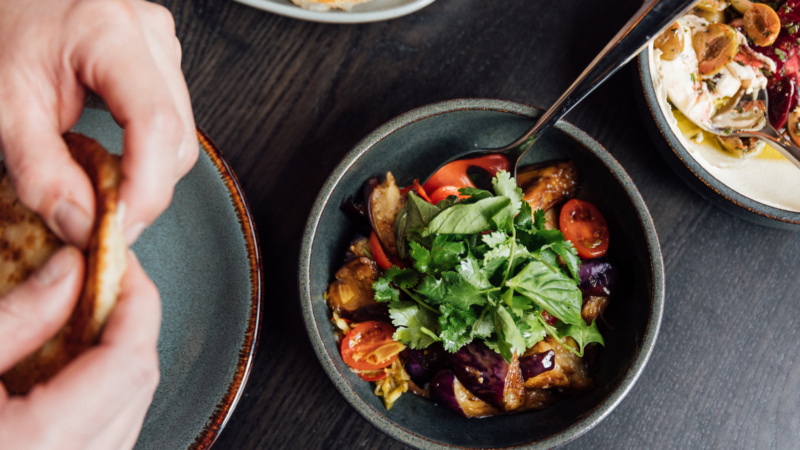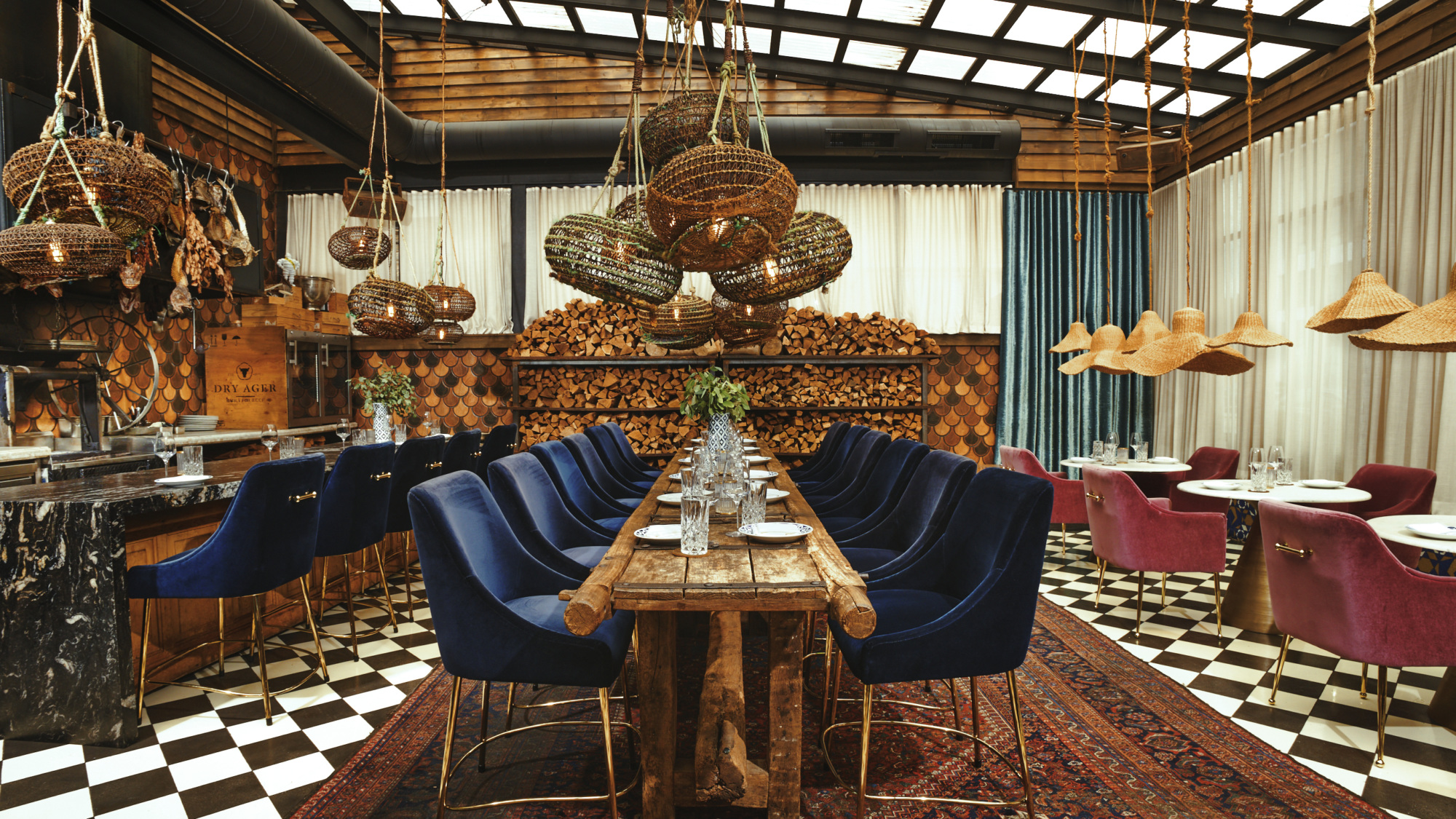
How Porto Transports You to Iberia’s Atlantic Coast
As with any Bonhomme Hospitality restaurant, to enter coastal Spanish and French restaurant Porto — adorned with opulent custom fixtures, dramatic tile, and repurposed wood — is to be whisked to another, more glamorous time and place. But it’s the food at this Michelin-starred restaurant in West Town that really transports you to the fishing villages and farmsteads dotting the coasts of Spain, Portugal, and France. Here, centuries-old ingredients and preservation techniques join modern flourishes to honor tradition with unfailing whimsy.
“This is our presentation of Atlantic cuisine, which covers Galicia in the north of Spain, and a little of Portugal and France,” says Porto’s executive chef, Marcos Campos. “The focus is on seafood from all of those areas, with the whole idea being for us to work in an ancestral style — cooking with mainly fire and wood, for instance — which pushes us to find ways to prepare seafood like no one else here is doing.”
Fittingly overseen by the Spanish Campos and French chef de cuisine Erwin Mallet, Porto’s prix-fixe tasting and seasonal a la carte menus lean heavily on elemental cooking and natural forms of salinity (i.e. seaweed), in a lovely contrast to the restaurant’s striking environs. Premium tinned seafood and produce feature prominently, too — not just for the sustainably sourced peak ingredients, but the flavor-rich brines and oils therein, inspiring the chefs to maximize every last drop. In their own words, Campos and Mallet walk us through five dishes that best capture this delicious coastal Iberian romp.
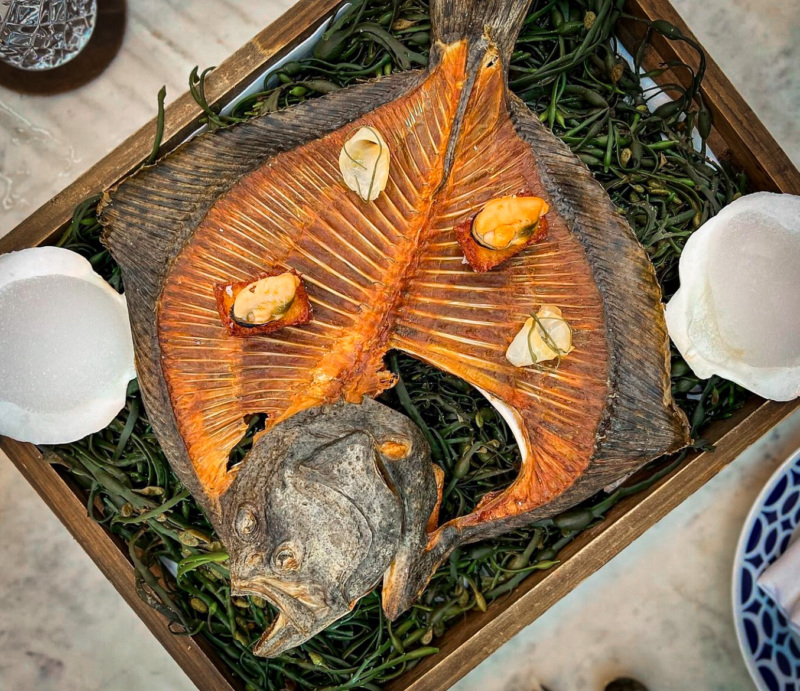

1. Conservas & Seaweed
(Smoked turbot, mussels en escabeche and seaweed foam — dish 1 of the 10-course tasting menu)
Marcos Campos: “This is our representation of what we do at Porto together on one platter, so people can have a better idea of what they’ll find during the whole tasting menu. The first of three expressions is the smoked turbot, which we get from a Galician fish market every week. We love that fish for the amount of gelatin in the filet. We dry it for 15 days, cured with salt and sugar, and cold-smoke it. But it’s still raw, like sashimi style, in its gelatin. We finish it with a little piece of Galician kombu seaweed pickled in Champagne vinegar.”
Erwin Mallet: “The second part is mussels in escabeche. The mussels are La Brújula conservas — we just open the can, use the mussels and keep the liquid to make mostarda with kombu. When Chef and I went to Galicia, we tried probably 10 different brands of conservas before selecting La Brújula, which is super-high quality, and based on century-old preservation techniques.
The last component is seaweed foam, or what we call a kiss from sea. We’ve all been to the beach and had that moment when you have a wave coming and you try to swim but end up getting a little drink of seawater. We try to recreate that here. We make the foam with seven types of seaweed, which we infuse in mineral water for 24 hours to make sure we get all that natural salinity, because we don’t use a lot of salt here.”
Campos: “It’s presented in a scallop shell; we recommend you eat it really fast, like getting splashed by the waves from the sea. We’re trying to bring people somewhere else — not in Chicago.”
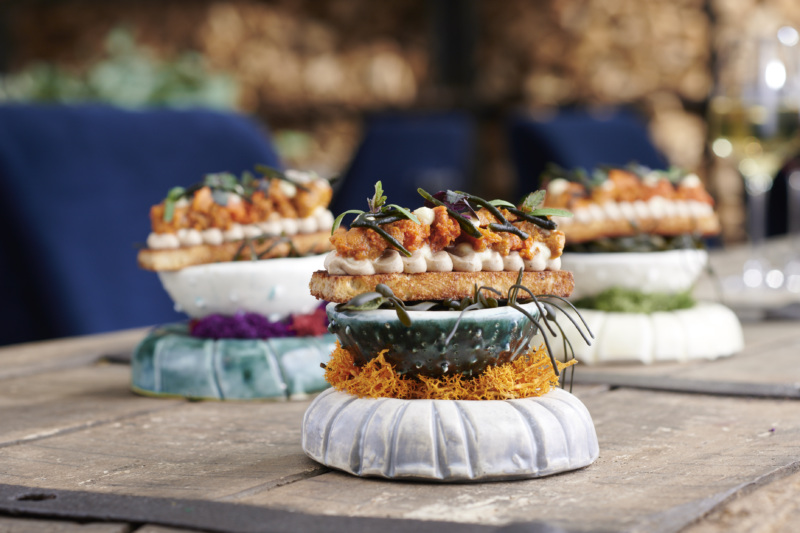

2. Uni Toast
(La Brújula uni conserva, smoked cauliflower and São Jorge cheese purée with nori lemon gel on toasted brioche — dish 3 of the 10-course tasting menu)
Mallet: “Again, we’re showcasing the high quality of conservas from this part of the world. La Brújula’s uni has incredible flavor and brininess that sometimes you don’t even find in fresh uni. How amazing these people mastered the technique of preserving something so delicate, with this texture that’s sort of egg-like.”
Campos: “We paired them with smoked cauliflower puree with São Jorge cheese, which is a semi-hard raw milk cheese from São Jorge island. It’s salty and full of umami, kind of like Parmesan from the Portuguese people. So you get this funkiness from the cauliflower and cheese purée. On top of that we do lemon and seaweed gel. We take lemon skin, blanch it to take the bitterness out, then blend it with nori and olive oil then put it on a little piece of toasted brioche.”


3. Razor Clams and White Asparagus
(La Brújula razor clams conserva, white asparagus conserva, codium seaweed “guac,” oyster espuma, golden Kaluga caviar — dish 4 of the 10-course tasting menu)
Mallet: “This dish is the best way to showcase how to fully use conservas; three of the main ingredients come from a jar or can: pasteurized caviar, clams, and the white asparagus. Instead of using fresh white asparagus — their season is really short, like two months max — we worked with a small company in the Basque country doing white asparagus in brine. Of course it’s unbelievable produce, but we also keep the brine to use later on. The razor clams [also from La Brújula] are one of the best factory conservas I’ve tried in my life. We just gonna, again, open the can and keep the liquid to use because it’s really, really good.”
Campos: “We decided to make an oyster mayo for the sauce that’s actually inspired by a story from my family in Spain. At Christmas time, my grandma always used to make white asparagus from a can with homemade mayo. Here, we use the gelatin from the oyster instead of eggs, which we emulsify with liquid from the two different jars. You get something really creamy with the seaweed flavor and brininess and sweetness from the asparagus, but not too strong on the flavor profile. We’re trying to respect memory and tradition, giving just a little sauce. It’s a really pure final dish.”


4. Beef Tartare
(8-year-old dry-aged Spanish-style grass-fed beef, West Coast oysters, anchovy garum, smoked tomato vinegar, sea lettuce brik tart, golden Kaluga caviar, pimentón migas — from the a la carte menu)
Campos: “This is the only meat dish other than jamón that we have on the menu, but beef tartar is a great collaboration between Erwin and myself. French restaurants are known for their technique of preparing beautiful tableside tartare. And in Spain we have an amazing beef called vaca vieja [“old cow”]. It’s harder to find in the U.S. because producers don’t want to wait eight to 10 years to make their money back on the animal. In Spain and France, we think that in time the beef will get better, like wine.
This beef is from 8-year-old dairy cows, so there’s a lot of fat, and the meat is really, really red. We dry age it in-house to control the humidity, temperature, and process. We chop the beef and mix it with chopped oyster, which emulsifies it a little. We mix that with anchovy garum, which is a fermented anchovy sauce we make based on really old techniques. We fold in organic egg yolk and a little neutral oil. Then, using a technique Erwin learned working in restaurants in France, we use a fork — never a spoon! — to mix the tartare and make almost a mayo right inside the bowl with the creamy oyster, yolk, and garum. We finish with a little caviar on top to add saltiness. In line with what we’ve been saying, we don’t want to use actual salt, just the natural umami and brininess from the sea.”
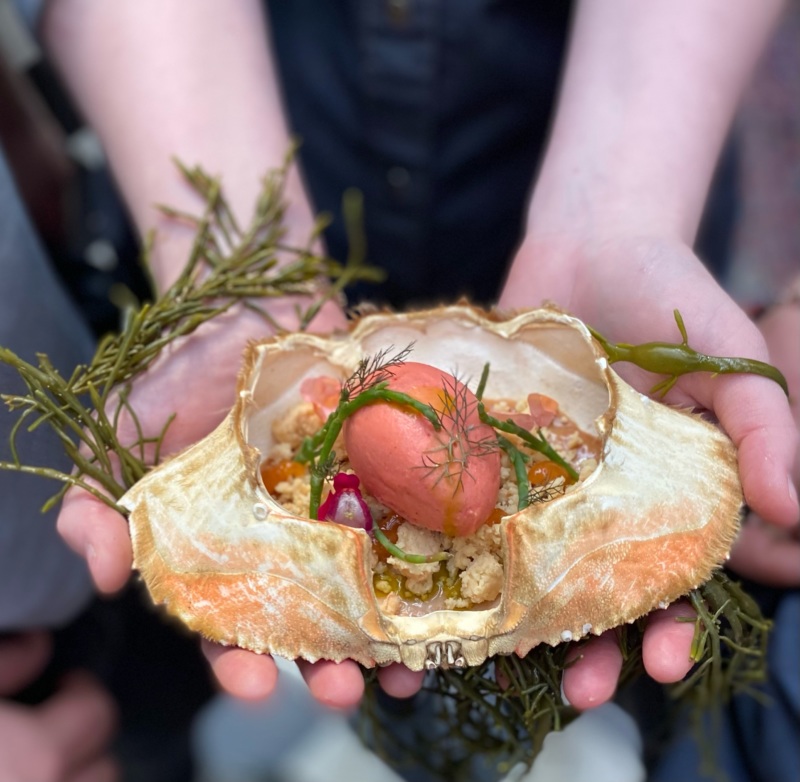

5. Tomato & Escabeche
(Strawberry and mejillones escabeche sorbet, plum-apricot conserve, Galician San Simon cheese shortbread, dulce pimenton, plankton olive oil, tomato panna cotta — from the dessert menu)
Campos: “Our executive pastry chef [Shannah Primiano] loves to find the balance between sweet, savory, and umami flavors. She works with a lot of the same ingredients we use on the savory side. First, she makes a strawberry escabeche sorbet using the mussels conserva liquid to get a more tangy acidity in the sorbet. At the bottom she puts housemade plum-apricot conserve — we also make our own conserves — which is fermented a little bit for acidity to help cut the sweetness.
She makes a cookie crumble with Galician cheese made from raw milk that’s also smoked for a little funk. She takes Michigan tomates from Buttermilk Sustainable Farms and roasts them for smokiness and caramelization, and makes a panna cotta without any other sugar besides the natural sweetness of the tomatoes. She finishes with plankton oil on top for the purest flavor from the sea with a little natural brininess. We found a company making oil from plankton, which a lot of people, especially in Europe, believe to be one of the most important resources for the ocean to be healthy. In this dish there’s a lot going on, but when you put everything together in one bite, it all makes sense.”
Maggie Hennessy is a Chicago-based restaurant critic and food writer, whose work has appeared in such publications as Eater, Plate, Food52, Wine Enthusiast, and others. Follow her on Instagram and Twitter. Follow Resy, too.










